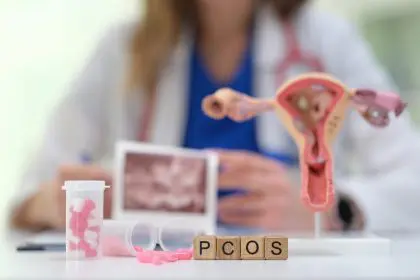Iron deficiency has reached epidemic proportions among American women, with approximately 34 percent of those aged 18 to 50 struggling with insufficient levels of this crucial mineral. Despite its prevalence, this condition often flies under the radar, with many women accepting persistent fatigue and other symptoms as normal aspects of their busy lives.
This essential mineral serves as the foundation for hemoglobin production – the protein in red blood cells responsible for transporting oxygen throughout the body. Without adequate iron, cells starve for oxygen, forcing the body to conserve energy and prioritize essential functions. Iron also plays a vital role in muscle oxygenation through myoglobin and supports numerous enzymatic processes necessary for optimal health.
Women face unique biological challenges when it comes to maintaining healthy iron levels. Monthly menstrual cycles create a recurring pattern of iron loss that men simply don’t experience. During pregnancy, iron requirements increase dramatically to support both maternal health and fetal development. These biological realities explain why women consistently show higher rates of deficiency compared to men across all age groups.
Recognizing the warning signs your body needs more iron
Iron deficiency manifests through numerous symptoms that can easily be attributed to other causes or modern life’s fast pace. Recognizing these indicators can lead to earlier intervention and prevent progression to more severe anemia.
Persistent fatigue stands out as the most common complaint among iron-deficient women. Unlike normal tiredness that resolves with adequate rest, this exhaustion persists regardless of sleep quality or duration. Activities that once seemed effortless suddenly require extraordinary energy, leaving many women wondering why their stamina has mysteriously vanished.
Perhaps the most unusual symptom appears as intense cravings for non-food items – a condition called pica. Women with severe iron deficiency often report irresistible urges to consume ice, clay, dirt, paper, or starch. This bizarre symptom serves as a red flag that warrants immediate medical attention, as it strongly correlates with significant iron depletion.
Cognitive changes often accompany iron deficiency, with many women reporting “brain fog,” difficulty concentrating, or memory problems. These mental effects stem from reduced oxygen delivery to brain tissue, impairing neurotransmitter function and cognitive processing. Many women describe the sensation as “thinking through molasses” – their thoughts present but frustratingly slow to form.
Physical appearance changes provide visible evidence of iron deficiency. Hair loss accelerates as follicles receive inadequate nourishment, while skin may appear paler than usual, particularly in the face, gums, and nail beds. These changes reflect the body’s adaptation to limited oxygen transport capacity.
Exercise intolerance emerges as activity demands increased oxygen that an iron-deficient body cannot deliver. Women may notice excessive breathlessness, racing heart rates, or dizziness during previously manageable workouts. This limitation often leads to reduced physical activity, creating a cycle that further diminishes overall health and fitness.
Mood disturbances, including irritability, anxiety, and even depression symptoms, frequently accompany iron deficiency. The brain requires consistent oxygen delivery to maintain emotional equilibrium. When oxygen transport falters due to iron deficiency, mood regulation systems struggle to function properly, affecting relationships and quality of life.
The long-term consequences of ignoring iron deficiency
Left unaddressed, iron deficiency progresses from a manageable nutritional gap to a serious medical condition with far-reaching effects. The body initially compensates for mild deficiency, but as iron stores continue depleting, systems begin failing in predictable patterns.
Cardiovascular complications develop as the heart works harder to circulate oxygen-poor blood. This increased workload can lead to palpitations, chest pain, and over time, potential heart enlargement. Those with pre-existing heart conditions face particular risks from untreated iron deficiency.
Immune function suffers significantly with chronic iron deficiency. Research shows iron-deficient individuals experience more frequent and severe infections, with slower recovery times. This vulnerability stems from impaired white blood cell production and function, leaving the body less equipped to fight pathogens.
Pregnancy complications increase dramatically with maternal iron deficiency. Studies link low maternal iron to higher rates of preterm birth, low birth weight, and developmental challenges in children. For the mother, iron deficiency during pregnancy increases the risk of postpartum depression and prolonged recovery.
Cognitive development in children and adolescents depends heavily on adequate iron. Young women with untreated deficiency during critical developmental periods may experience lasting effects on academic performance and cognitive potential. This makes early detection especially crucial during adolescence when girls begin menstruating and facing increased iron loss.
Understanding who faces the highest risk
While all women of reproductive age face elevated risk compared to men, certain groups experience disproportionately high rates of iron deficiency. Recognizing these risk factors can prompt earlier screening and intervention.
Women with heavy menstrual bleeding lose significant iron monthly, often without realizing their periods differ from average. Medical conditions like fibroids, endometriosis, or bleeding disorders frequently contribute to excessive menstrual blood loss. For these women, addressing both the underlying cause and resulting iron deficiency proves essential for restoring health.
Pregnant and postpartum women require substantially more iron – up to 50 percent more during pregnancy – to support fetal development and recover from childbirth. This demand often exceeds what diet alone can provide, making supplementation necessary for many expecting mothers.
Black women face statistically higher rates of iron deficiency anemia compared to other racial groups in America. This disparity stems from multiple factors, including higher prevalence of conditions affecting iron absorption, cultural dietary patterns, and systemic healthcare access issues. For Black women, regular screening becomes particularly important for early detection.
Athletes, especially female distance runners, consistently show higher iron deficiency rates than the general population. The combination of menstrual blood loss, increased iron needs for muscle development, and iron lost through sweat creates a perfect storm for deficiency. Many experience declining performance without recognizing iron as the culprit.
Vegetarians and vegans must work harder to maintain adequate iron levels since plant sources (non-heme iron) offer lower bioavailability than animal sources (heme iron). Without careful dietary planning, plant-based eaters may struggle to meet their requirements, especially during menstruation or pregnancy.
Those with gastrointestinal conditions like celiac disease, inflammatory bowel disease, or after certain weight-loss surgeries often struggle with iron absorption regardless of dietary intake. For these individuals, traditional oral supplements may prove ineffective, requiring alternative approaches supervised by healthcare providers.
Effective strategies for rebuilding your iron reserves
Addressing iron deficiency requires a multi-faceted approach tailored to each woman’s specific needs, severity of deficiency, and underlying causes. Most cases respond well to strategic interventions when properly implemented.
Dietary modifications form the foundation of long-term iron management. Iron-rich foods include lean red meat, chicken, turkey, and fish as animal sources. Plant-based options include lentils, chickpeas, beans, tofu, pumpkin seeds, dried apricots, and dark leafy greens like spinach. Combining these foods with vitamin C sources enhances absorption significantly.
Strategic meal planning improves iron absorption efficiency. Separating iron-rich meals from substances that block absorption makes a substantial difference. Coffee, tea, calcium supplements, and dairy products can reduce iron absorption by 40-60 percent when consumed simultaneously with iron sources. Waiting two hours between consuming these items maximizes iron uptake.
Supplement selection requires careful consideration beyond simply grabbing any iron pill. Different forms offer varying absorption rates and side effect profiles. Ferrous sulfate provides high elemental iron but often causes gastrointestinal distress. Gentler options like ferrous gluconate or iron bisglycinate may prove better tolerated despite containing less elemental iron per dose.
For those with severe deficiency or absorption issues, intravenous iron provides a direct solution that bypasses the digestive system entirely. Modern formulations have improved safety profiles compared to older versions, allowing for complete iron replenishment in just one or two treatments. This option particularly benefits those with inflammatory bowel conditions, heavy menstrual bleeding, or poor response to oral supplements.
Lifestyle modifications support successful iron restoration. Reducing intense exercise temporarily during severe deficiency allows the body to allocate resources toward recovery rather than performance. Prioritizing adequate sleep gives the bone marrow optimal conditions for producing new red blood cells. Stress management techniques reduce cortisol levels that can interfere with iron absorption and utilization.
The journey back to optimal health
Recovery from iron deficiency follows a predictable timeline, though individual experiences vary based on severity and treatment approach. Understanding this progression helps women maintain patience and persistence throughout the process.
Most women notice initial energy improvements within the first 1-2 weeks of effective treatment, though complete resolution takes longer. Ferritin levels, which measure iron storage, typically rise gradually over 3-6 months of consistent supplementation. Blood cell counts normalize sooner, usually within 8-12 weeks, as the bone marrow receives adequate iron for hemoglobin production.
Symptom resolution follows a fairly consistent pattern. Fatigue and dizziness often improve first, followed by enhanced exercise tolerance and cognitive clarity. Hair loss typically stabilizes before new growth appears, while nail and skin changes may take months to fully normalize. Unusual cravings like ice consumption frequently disappear within weeks of beginning treatment.
Follow-up testing proves essential for confirming recovery and preventing relapse. Most healthcare providers recommend rechecking iron levels after 3 months of treatment, with subsequent testing based on individual risk factors. Many women with recurring deficiency benefit from biannual screening to catch declining levels before symptoms return.
For those with persistent or recurrent deficiency despite appropriate intervention, further medical investigation becomes necessary. Hidden bleeding sources, malabsorption disorders, or genetic conditions affecting iron metabolism may require specialized treatment beyond simple supplementation.
By understanding both the risks and remedies associated with iron deficiency, women can take proactive steps to protect their health and maintain optimal energy levels throughout life. This common but treatable condition doesn’t have to limit quality of life when properly addressed through awareness, testing, and targeted intervention.














